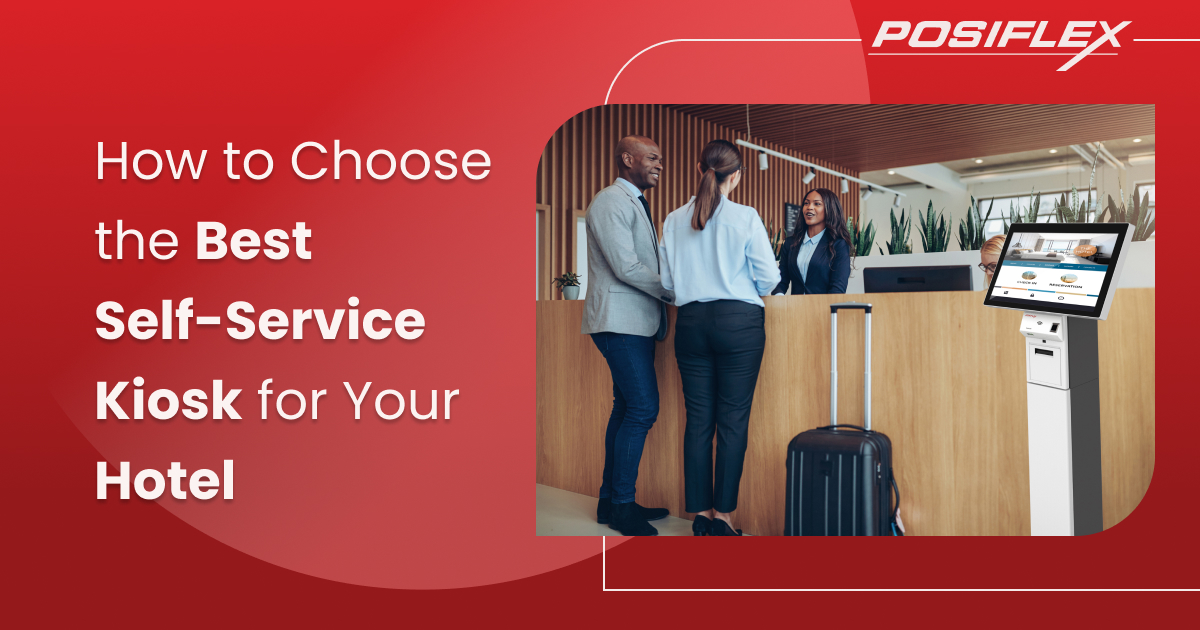
In one of our previous blogs, Top Features to Look for in a Self-Service Kiosk for Hotels, we examined the key attributes of hotel self-check-in machines or self-service kiosks that ensure a smooth customer experience in hotels.
Now, through this follow-up blog, let’s try to understand how to choose the best self-service kiosk for hotels by exploring the link between components of kiosks (physical features) and customer satisfaction.
However, before diving into the subject, we would like to recap some of the key points we have already covered in the previous blog to help the reader quickly transition into this step-by-step guide to selecting the right self-service terminal!
Citing a joint study by Skift and Oracle titled “Hospitality in 2025: Automated, Intelligent, and More Personal”, we discussed that customer expectations from the hospitality industry have been evolving, with self-service, or self-service delivered with some assistance from hotel staff, gaining significant traction. This is because empowering customers with self-service improves service speed, which is one of the main drivers of quality customer experience.
Given that the report stressed personalisation as a top priority for hotels, we had highlighted that kiosks can serve as a touchpoint for collecting customer data.
Leveraging this data, hoteliers can customise services via relevant offers and recommendations—upselling or cross-selling—when guests opt for a service.
A key example of personalisation includes “unbundling” of services, which refers to billing only for the amenities used, rather than a blanket amenities fee baked into the bill.
Here is a list of the key features of top-of-the-line hotel self-check-in machines or self-service kiosks:
The processor is one of the most important features responsible for the service speed of hotel self-check-in machines, which is based on how swiftly the self-service kiosks process information or input. The higher the core and thread count of the processor, especially if it is a New Gen processor, the more efficient it is likely to be.
Further, the processor’s Instruction Set Architecture (ISA) determines the OS compatibility of the kiosk—yet another factor driving the processing speed of the device.
In other words, the best self-service kiosk for hotels, i.e., those that optimise the check-in, check-out, and other service requests, has a powerful multi-core, multi-thread processor with an ISA that supports recent versions of Operating Systems.
However, these features alone don’t suffice to quickly pull up historical customer or other business data. In the next section, let’s discover the features responsible for crunching business data for smooth customer service.
While processing speed, i.e., the power of the processor and the OS it supports, ensures swift data or input crunching, leading to a quick churning out of the output, processing speed is not the only metric for a device’s efficiency. Without the device’s RAM and storage capacity, the self-service kiosk would remain dependent on the network speed to access the business data stored in the cloud ERP.
Enabling access to business data, the best self-service kiosk for hotels must have sufficiently large edge data storage capacity. Besides the storage capacity, a robust RAM remains essential as the configuration helps sift through the large pile of data to pick the right data set.
As we saw in the section above, the processing of business data is powered by the combined force of the processor, the OS, the RAM, and the storage capacity. Hence, these features are crucial for personalised suggestions and offers, which are derived from business data, to appear intuitively on the kiosk display, thereby elevating the user experience.
The touch-sensitivity of the self-service kiosk display is paramount because the screen is the interface receiving user input.
Here are some built-in features that hoteliers should consider for improving guest experience:
POSIFLEX self-service kiosks, which in this scenario serve as hotel self-check-in machines, have topline processors, support some of the latest versions of Windows and Android Operating Systems, and robust RAM as well as storage capacity for swift edge data processing. At the same time, the three POSIFLEX self-service kiosk series, the EK, JK, and HK Series, have large and ultra-responsive touchscreen displays, offering a smooth user interface.
The hotel self-check-in machines support a wide range of peripherals which connect with the kiosk through different types of ports, making the device an all-in-one touch point for customer transactions, which is characteristic of some of the best self-service kiosks for hotels in the market. Additionally, some of the POSIFLEX kiosk series models come with a built-in camera, barcode scanner, and printer, further ensuring top-notch performance within a compact form factor.
Curious to know more? Contact us now, and one of our executives will get in touch with you shortly!
Copyright © 2025 Posiflex Technology, Inc. All Rights Reserved.
WhatsApp us